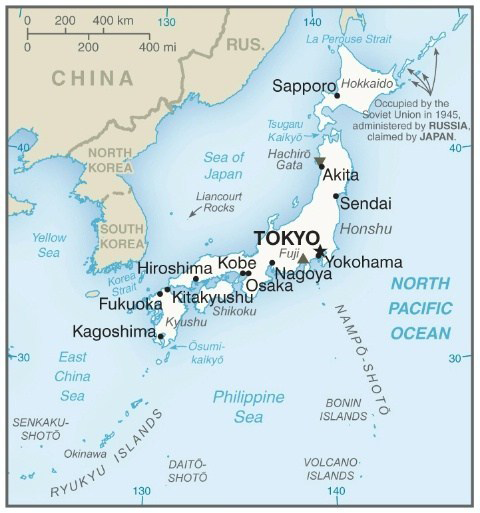Part 1 of 2 Parts
I have blogged about Japan and nuclear weapons before. Japan is the only country which has experienced an attack with nuclear weapons. The bombing by the U.S. of Hiroshima and Nagasaki ended World War II in the Pacific in 1945. Following the war, the new Japanese Constitution prohibited Japan from developing offensive weapons. In 1967, Japan adopted the Three Non-Nuclear Principles which prohibit the production, possession and/or the introduction of nuclear weapons.
In the past few years there have been calls for Japan for considering the production of nuclear weapons. This was partially triggered by statements of the U.S. President that perhaps it was time for Japan to accept responsibility for dealing with the threat of nuclear attacks by developing their own nuclear weapons instead of hiding under the U.S. “nuclear umbrella.” There have also been calls from hardliners on the right in Japan to consider a Japanese nuclear weapons program.
Japan is under threat from neighbors such as China, Russia and North Korea who do have nuclear weapons. Without the protection of the U.S., it is reasonable for Japan to consider the possibility of developing their own nuclear weapons to balance the threats against them.
China’s security posture and weapons program would be strongly influenced by Japanese nuclear weapons. They would have to make serious changes to their nuclear policy and their nuclear weapons and delivery systems. Japan has no publicly announced plans to develop nuclear weapons at this time. China has a nuclear policy of no first use of nuclear weapons so even if Japan had nuclear weapons, theoretically China would be no threat unless Japan attacked them first. On the other hand, reality does not always conform to theory.
North Korea would also have to worry about Japanese nuclear weapons. Both are small countries and especially vulnerable to nuclear attack.
If Japan decided it wanted nuclear weapons, it has an industrial base for the construction of nuclear reactors which could be rapidly adapted for nuclear weapons production. It has major manufacturing facilities that could easily be turned to the production of nuclear delivery systems that would match the traditional nuclear triad of existing nuclear powers. These include land-based nuclear ballistic missiles, strategic nuclear bombers and ballistic nuclear missile submarines.
It would realistic to consider a Japanese arsenal of a few hundred nuclear warheads. Of the nine countries with nuclear weapons today, only the U.S. and Russia have more than a few hundred nuclear warheads. Japan is so small that it would only require a few nuclear warheads to devastate Japan and kill millions of Japanese. To serve as a convincing nuclear deterrent, Japan would have to have enough nuclear weapons to cause very serious damage to any enemy which attacked it with nuclear weapons.
Japan could easily manufacture land-based nuclear ballistic missiles. These could be kept in hardened silos like the U.S. land-based nuclear missiles or they could be placed on mobile launchers as Russia does with some of their missiles. Japanese ballistic missiles would not have to be able to fly to the other side of the planet. They would only need to be able to reach all of China, the Middle East and European Russia. However, most of Japan’s potential enemies are so close that it would be quite easy for accident or a misinterpreted missile launch to invite premature retaliation from a potential enemy.
Please read Part 2
